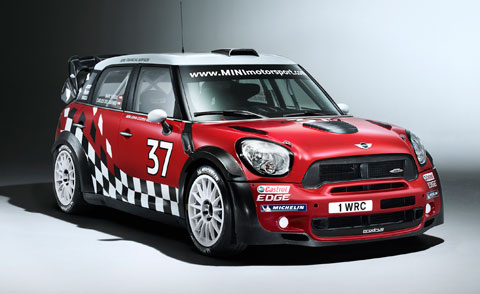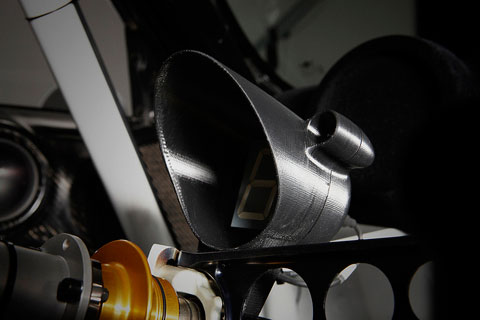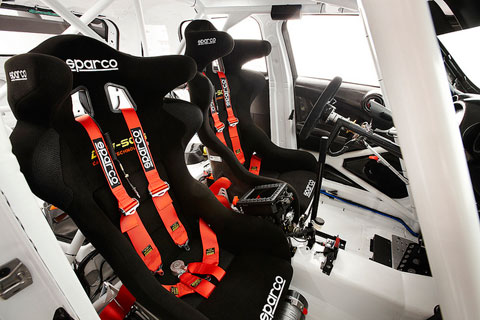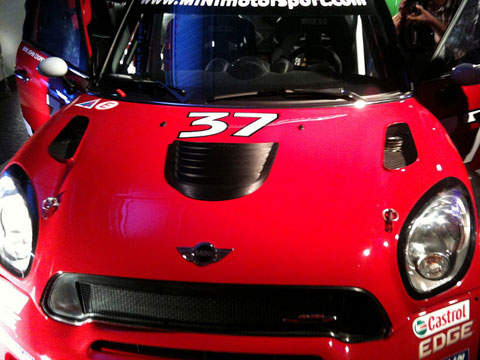
The new MINI John Cooper Works World Rally Car (WRC).
I’ve got a bit of a soft spot for MINIs – my first car was a Blue 1985 Austin MINI City E complete with classic cockpit, spluttering engine, and an inability to overtake without a perfectly timed run-up.
Of course my rusty bucket is a world away from the sporty BMW-designed car that has taken over and they don’t come more sporty than the new MINI John Cooper Works World Rally Car (WRC), which will feature in this year’s World Rally Championship.

Mounted on the steering wheel this display panel was built on a Dimension 1200 using ABS.
Two years in development, the MINI WRC Team relied heavily on 3D printing in the production of the test car. Engineers used Stratasys FDM 3D Printing technology to create large parts of the engine bay, gearbox, steering assembly, vehicle interior and even engine components, such as intake valves.
In addition to prototyping parts for the test track, the MINI WRC Team even produced some end-use parts for the finished car. One of the most visible of these is the ergonomically styled gearshift display and control panel, which is mounted on the steering column.
The development of the car has impressed upon MINI WRC Team the importance of 3D printing in saving time, reducing tooling costs and enabling more design freedom of complex geometric parts.
“We would find it nearly impossible to build another car without using FDM technology,” said Paul Doe, chief design engineer. “We would never have dreamt of building the parts we did without the Stratasys machines. Using composite parts would have cost up to three to five times more.”
MINI WRC Team used Stratasys Dimension 1200es 3D Printers and Fortus 400mc production 3D Printers with polycarbonate and ABS materials.

The centre console between the seats houses the electronic controls which manage the performance of the car. The part was built on a Dimension 1200 using ABS.

The air intake, below the number 37, was built on a Fortus 400mc using polycarbonate. It is used to cool the engine.






